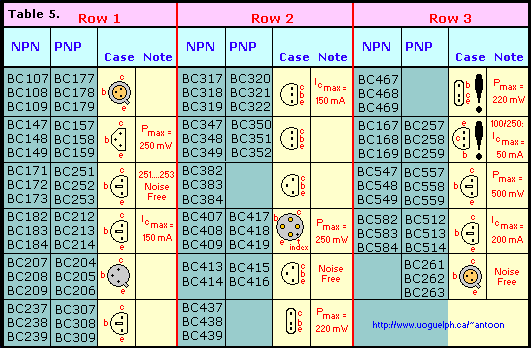 The minimum specifications have to be met,
in Table 1a above,
The minimum specifications have to be met,
in Table 1a above, before you can call it a 'TUP' or a 'TUN'.
The minimum specifications have to be met, in Table 1a above,
before you can call it a 'TUP' or a 'TUN'.
The minimum specifications have to be met, in Table 1b above,
before you can call it a 'DUS' or a 'DUG'.
In the above tables, Table 2 & 3, you can use several different transistor types for a TUP or a TUN.
Obviously the tables are not complete. It would be almost impossible to list all available transistor types available today.
From the above listed types are all A, B, or C types usable.
Several different types of diodes are suitable as a 'DUS' or 'DUG'.
The most important parameters of the BC107...BC109 and the BC177...BC179.
These transistors have been chosen as an example of information.

The letter after the transistor indicates the hfe.
Example: BC107A, hfe = 125 ... 260
BC107B, hfe = 240 ... 500
BC107C, hfe = 450 ... 900
Substitutes within the BC series of transistors are also possible.
In Table 6 you see that the transistors are grouped in three. Example, the
BC107, BC147, BC317 and BC413 can be substituted with each other, but a BC548
may not be exchanged for a BC107. Why? The BC548 is the second of a group
of three. Your choice would be a BC547(A,B, or C).